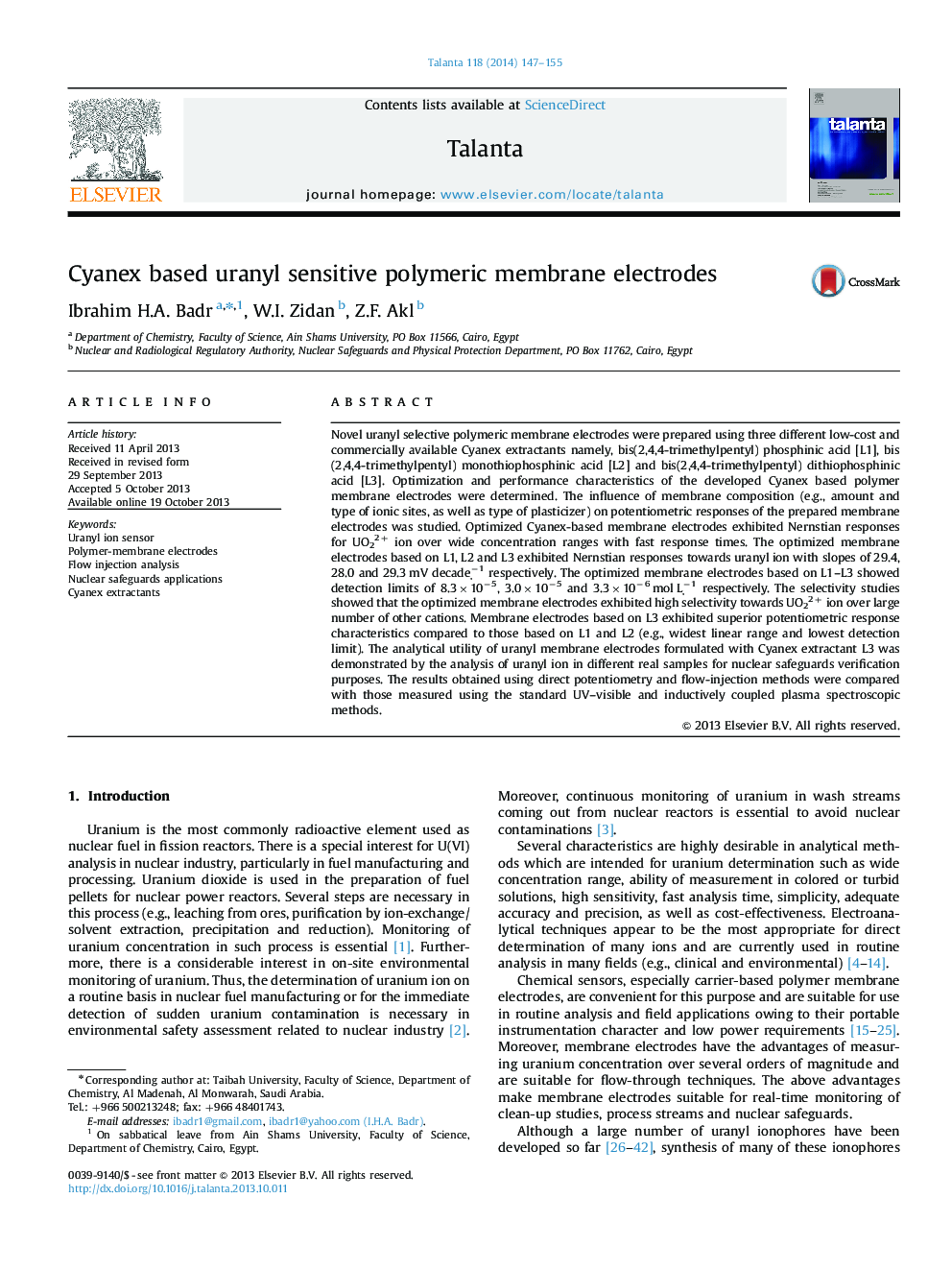| Article ID | Journal | Published Year | Pages | File Type |
|---|---|---|---|---|
| 1242101 | Talanta | 2014 | 9 Pages |
•First report on utilizing Cyanex extractants for development of UO22+-ISEs.•Cyanex-based ISEs exhibited high selectivity and fast response for UO22+.•Cyanex-based UO22+ ISEs were utilized in nuclear safeguards applications.
Novel uranyl selective polymeric membrane electrodes were prepared using three different low-cost and commercially available Cyanex extractants namely, bis(2,4,4-trimethylpentyl) phosphinic acid [L1], bis(2,4,4-trimethylpentyl) monothiophosphinic acid [L2] and bis(2,4,4-trimethylpentyl) dithiophosphinic acid [L3]. Optimization and performance characteristics of the developed Cyanex based polymer membrane electrodes were determined. The influence of membrane composition (e.g., amount and type of ionic sites, as well as type of plasticizer) on potentiometric responses of the prepared membrane electrodes was studied. Optimized Cyanex-based membrane electrodes exhibited Nernstian responses for UO22+ ion over wide concentration ranges with fast response times. The optimized membrane electrodes based on L1, L2 and L3 exhibited Nernstian responses towards uranyl ion with slopes of 29.4, 28.0 and 29.3 mV decade−1, respectively. The optimized membrane electrodes based on L1–L3 showed detection limits of 8.3×10−5, 3.0×10−5 and 3.3×10−6 mol L−1, respectively. The selectivity studies showed that the optimized membrane electrodes exhibited high selectivity towards UO22+ ion over large number of other cations. Membrane electrodes based on L3 exhibited superior potentiometric response characteristics compared to those based on L1 and L2 (e.g., widest linear range and lowest detection limit). The analytical utility of uranyl membrane electrodes formulated with Cyanex extractant L3 was demonstrated by the analysis of uranyl ion in different real samples for nuclear safeguards verification purposes. The results obtained using direct potentiometry and flow-injection methods were compared with those measured using the standard UV–visible and inductively coupled plasma spectroscopic methods.
